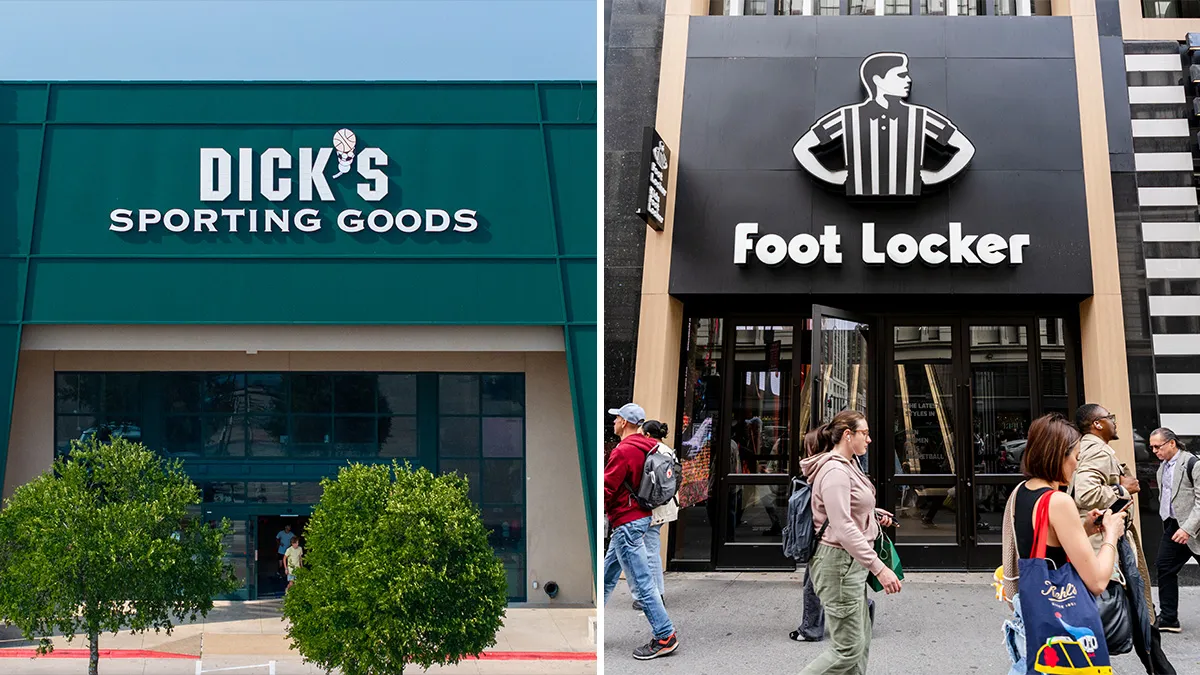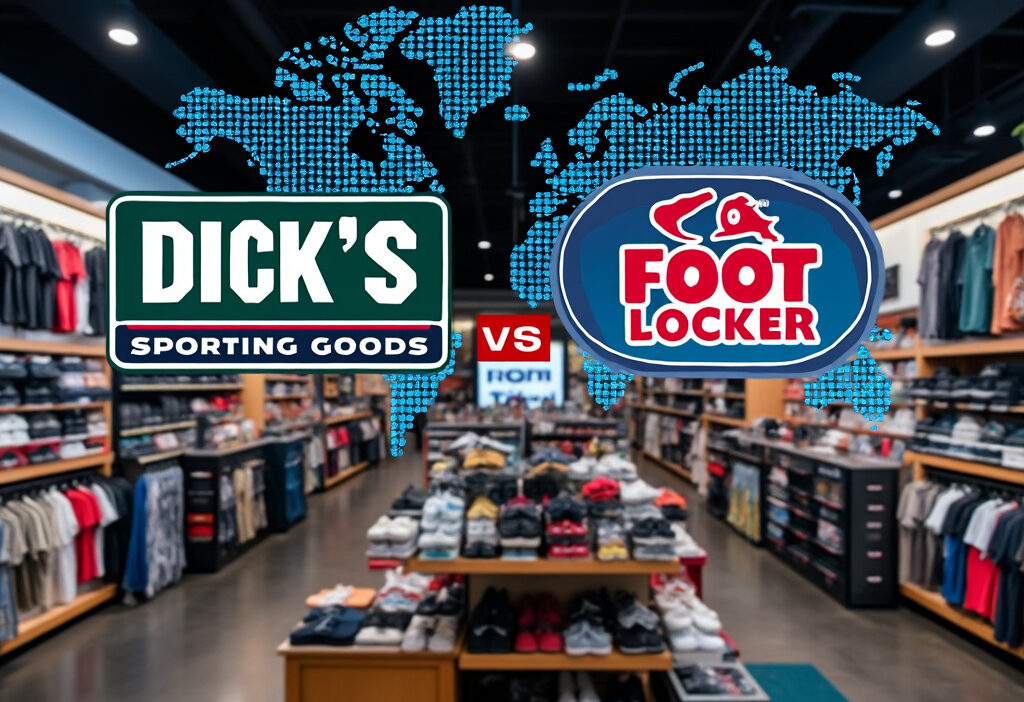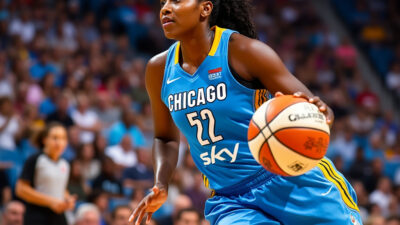Dick’s Sporting Goods to Acquire Foot Locker in $2.4 Billion Deal
In a landmark deal announced on May 15, 2025, Dick’s Sporting Goods is set to acquire Foot Locker for approximately $2.4 billion, marking a significant consolidation in the sports retail industry. This acquisition promises to transform Dick’s into a global powerhouse, combining Foot Locker’s international presence with Dick’s extensive U.S. retail network. The deal underscores the evolving dynamics of sports retail, where scale and specialization are key to capturing consumer demand.
The Announcement and Deal Overview
On June 15, 2023, Dick’s Sporting Goods announced its acquisition of Foot Locker in a landmark $2.4 billion all-stock deal, marking a major consolidation in the sports retail sector. The agreement, approved by both boards, positions the combined entity as a dominant global player with enhanced scale and market reach. The deal values Foot Locker at $78 per share, representing a 25% premium over its closing price before the announcement, underscoring Dick’s confidence in the strategic fit.
The acquisition aligns with Dick’s expansion strategy, leveraging Foot Locker’s strong brand recognition in athletic footwear and urban markets. For Foot Locker, the deal provides stability amid shifting retail dynamics, while shareholders gain exposure to Dick’s robust omnichannel platform. Analysts highlight the synergy potential, with cost savings estimated at $150 million annually through streamlined operations and shared technology investments. Regulatory approvals are expected by early 2024, with integration plans already underway.
Deal Structure and Shareholder Options
Under the terms of the acquisition, Foot Locker shareholders have two options: cash or stock. They can receive $75 per share in cash or exchange each Foot Locker share for 0.65 shares of Dick’s Sporting Goods stock. The cash offer represents a premium of approximately 28% over Foot Locker’s closing price before the announcement, reflecting the strategic value Dick’s places on the acquisition. The stock exchange option allows shareholders to participate in the combined company’s future growth. The deal, expected to close in Q4 2023, is subject to regulatory approvals and shareholder votes. The transaction will be financed through a mix of cash reserves and debt, with Dick’s emphasizing its commitment to maintaining financial flexibility post-acquisition.
Strategic Benefits for Dick’s Sporting Goods
The acquisition of Foot Locker presents significant strategic benefits for Dick’s Sporting Goods, positioning it as a dominant force in sports retail. By integrating Foot Locker’s global footprint, Dick’s gains immediate access to international markets, reducing reliance on U.S. sales. Foot Locker’s strong brand recognition in sneaker culture complements Dick’s broader athletic offerings, creating a diversified portfolio that appeals to a wider customer base.
The synergies between both companies extend beyond geography. Foot Locker’s expertise in urban and youth-focused retail pairs well with Dick’s suburban big-box model, enabling cross-selling opportunities. Additionally, Dick’s can leverage Foot Locker’s exclusive supplier relationships with Nike and Adidas to enhance its own merchandise mix.
Financially, the deal strengthens Dick’s competitive edge against e-commerce giants by combining physical retail strengths with digital capabilities. The acquisition also accelerates Dick’s omnichannel strategy, integrating Foot Locker’s digital platforms and loyalty programs.
This move solidifies Dick’s as a global leader in sports retail, driving long-term growth through expanded reach, brand synergy, and operational efficiencies.
Foot Locker’s Global Footprint
Foot Locker’s global footprint spans over 2,800 retail stores across 20 countries, including key markets in Europe, Asia, and Australia, with an additional presence through licensed stores in regions like the Middle East and South Africa. This extensive network positions the brand as a dominant force in sneaker and streetwear retail worldwide, far beyond Dick’s Sporting Goods’ primarily U.S.-focused operations. Foot Locker’s stronghold in urban centers and high-traffic shopping districts gives Dick’s immediate access to international consumers, particularly younger demographics deeply engaged in sneaker culture. The acquisition also brings Foot Locker’s established e-commerce infrastructure, which has been optimized for global sales, further enhancing Dick’s ability to scale internationally. By leveraging Foot Locker’s existing supply chains and localized marketing strategies, Dick’s can accelerate its expansion without the heavy lift of building overseas operations from scratch. This move not only diversifies Dick’s revenue streams but also mitigates reliance on the U.S. market, creating a more resilient business model. The combined entity will benefit from Foot Locker’s deep-rooted relationships with global sportswear brands, ensuring a steady pipeline of exclusive releases and collaborations that drive foot traffic and online sales. With this acquisition, Dick’s transforms from a domestic powerhouse into a true global leader in sports retail.
Brand Portfolio and Market Position
Foot Locker’s brand portfolio significantly enhances Dick’s Sporting Goods’ positioning in sneaker culture and streetwear. Under its umbrella, Foot Locker operates Champs Sports, Eastbay, and Kids Foot Locker, each catering to distinct consumer segments. Champs Sports appeals to performance-driven athletes, Eastbay serves hardcore sneaker enthusiasts, while Kids Foot Locker captures the youth market. These brands, combined with Foot Locker’s strong ties to Nike, Adidas, and Jordan, solidify Dick’s dominance in athletic footwear.
The acquisition unlocks cross-brand synergies, allowing Dick’s to integrate Foot Locker’s streetwear credibility with its own outdoor and team sports expertise. Foot Locker’s exclusive collaborations and limited-edition drops can be leveraged across Dick’s broader retail network, while Dick’s operational scale can optimize Foot Locker’s supply chain. Additionally, Dick’s can utilize Foot Locker’s digital platforms, like its FLX loyalty program, to enhance customer engagement. This merger creates a powerhouse capable of competing with both specialty sneaker retailers and e-commerce giants.
Post-Acquisition Business Strategy
Post-acquisition, Dick’s Sporting Goods plans to operate Foot Locker as a standalone unit, preserving its strong brand identity while integrating operational efficiencies. By leveraging Dick’s supply chain and inventory management expertise, Foot Locker’s stores and e-commerce platforms will benefit from cost savings and improved logistics. The strategy focuses on maintaining Foot Locker’s streetwear and sneaker dominance while expanding its reach through Dick’s retail infrastructure. Cross-brand collaborations, such as exclusive product drops, will drive foot traffic and online engagement. Dick’s will also invest in Foot Locker’s digital transformation, enhancing its omnichannel capabilities to compete with direct-to-consumer rivals.
Financial Implications and Market Share
The $2.4 billion acquisition of Foot Locker by Dick’s Sporting Goods is poised to reshape the financial landscape of the sports retail industry. By integrating Foot Locker’s $8.1 billion in annual revenue, Dick’s will significantly bolster its top-line growth, pushing combined revenues to over $15 billion. This positions the merged entity as a dominant force, narrowing the gap with industry leader Nike in terms of retail presence.
Pre-acquisition, Dick’s held a strong but regional foothold in the U.S., while Foot Locker’s global reach—particularly in Europe and Asia—offers immediate international expansion opportunities. The deal also diversifies Dick’s revenue streams, reducing reliance on hardgoods like fitness equipment and shifting toward higher-margin apparel and footwear.
However, the financial impact isn’t without risks. Foot Locker’s recent struggles with declining same-store sales and reliance on Nike products could pressure margins. Dick’s will need to optimize Foot Locker’s operations, leveraging its own supply chain efficiencies to improve profitability. Analysts project cost synergies of $150–$200 million within three years, but integration costs may temporarily weigh on earnings.
Market share post-acquisition will see Dick’s leapfrog competitors like Hibbett Sports, securing nearly 20% of the U.S. athletic retail market. The combined footprint of over 3,000 stores strengthens bargaining power with suppliers, potentially unlocking better terms from brands like Adidas and Under Armour. Still, investor scrutiny will focus on execution—balancing Foot Locker’s standalone identity with Dick’s operational discipline.
Leadership and Vision for the Future
Leadership and Vision for the Future
Dick’s Sporting Goods CEO, Lauren Hobart, emphasized the acquisition as a transformational step to solidify their position as a global sports retail leader. “This isn’t just about scale—it’s about combining strengths to serve athletes better,” she stated. The deal leverages Foot Locker’s deep sneaker culture and Dick’s broad sporting goods expertise to create a unified, customer-centric powerhouse.
CFO Navdeep Gupta highlighted growth opportunities, noting Foot Locker’s strong urban footprint complements Dick’s suburban dominance. “Together, we can unlock omnichannel potential and elevate the athlete experience,” he added. Executives also stressed honoring Foot Locker’s legacy while integrating its brand into Dick’s ecosystem.
The vision includes three key pillars:
- Expansion into underserved markets, particularly international and digital.
- Innovation through shared tech and data capabilities.
- Community engagement, blending Foot Locker’s streetwear appeal with Dick’s youth sports focus.
This strategic alignment aims to redefine sports retail, ensuring long-term relevance in a rapidly evolving industry.
Industry Reactions and Competitive Landscape
The Dick’s Sporting Goods-Foot Locker deal has sent ripples through the sports retail industry, with analysts and competitors weighing in on its potential impact. Many see the $2.4 billion acquisition as a bold consolidation play, positioning the combined entity as a dominant force against rivals like Nike Direct, Adidas, and Hibbett Sports. Industry experts suggest the merger could pressure smaller retailers to seek partnerships or niche strategies to survive.
The deal also raises questions about market dynamics, particularly in footwear and apparel, where Foot Locker’s strong brand relationships could bolster Dick’s positioning. Competitors may now face intensified pricing and inventory challenges, accelerating the shift toward omnichannel retailing and experiential store formats. Analysts predict further consolidation as brands and retailers adapt to a landscape increasingly shaped by scale and digital integration.
Investors and stakeholders are watching closely, as the merger could redefine how sports retail balances e-commerce with brick-and-mortar presence. The combined scale may also influence supplier negotiations, potentially reshaping margins across the industry.
Looking Ahead The Future of Sports Retail
The merger of Dick’s Sporting Goods and Foot Locker positions the combined entity to dominate the evolving sports retail landscape. With omnichannel retailing becoming the norm, the new powerhouse can leverage Dick’s robust e-commerce infrastructure and Foot Locker’s urban store footprint to create a seamless shopping experience. The rise of specialized footwear and apparel, driven by performance-driven consumers and athleisure trends, will further fuel growth, as both brands bring complementary strengths in these categories.
Looking ahead, the integration of data analytics and AI-driven personalization could redefine customer engagement, enabling hyper-targeted product recommendations and inventory optimization. The combined scale may also allow for stronger negotiations with top brands like Nike and Adidas, securing exclusive releases and collaborations. However, challenges remain—balancing brick-and-mortar relevance with digital growth, while fending off competition from direct-to-consumer brands and marketplaces like Amazon, will be critical.
The future of sports retail lies in blending physical and digital experiences, and this merger sets the stage for innovation in areas like augmented reality fitting rooms and subscription-based loyalty programs. If executed well, the new entity could set industry benchmarks, pushing rivals to accelerate their own transformations.

Conclusions
The acquisition of Foot Locker by Dick’s Sporting Goods represents a bold step towards global dominance in the sports retail sector. By merging Foot Locker’s international footprint and brand portfolio with Dick’s operational expertise, the deal sets the stage for enhanced market share and consumer reach. As the industry watches this merger unfold, the combined entity is poised to redefine sports retail on a global scale.



